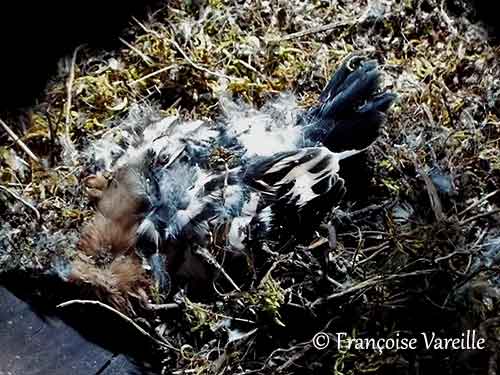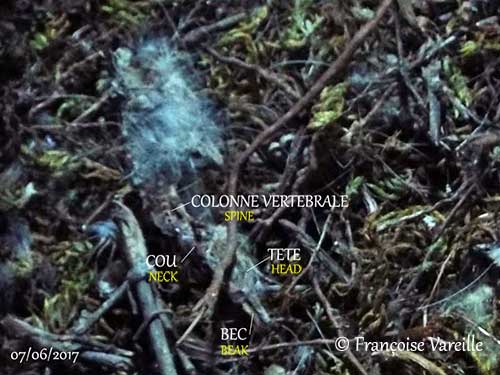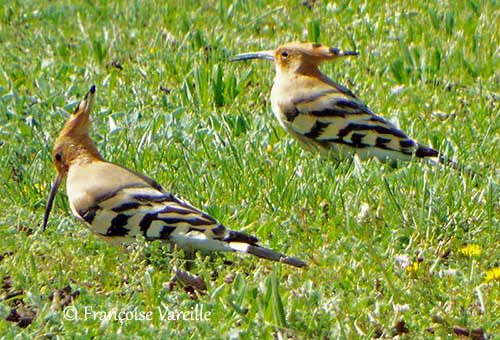
Many thanks to Françoise Vareille for this wonderful observation.
The flash was not used for these photos. The light passing between the boards of the cask was sufficient for the shooting.
A hole at the top of the cask allows taking pictures without opening and with a minimum of disturbance for the birds already accustomed to the comings and goings around the cask for garden maintenance.
The text was written by Nicole Bouglouan, according to the notes and information provided by Françoise Vareille.
All pictures on this page are owned by Françoise Vareille.
These images and the text are subject to copyright and cannot be used without express authorization from the owners. Legal issues
HOOPOE'S REPRODUCTION - 2017
(Upupa epops)
Like the three previous years, the Hoopoes are nesting again in the old cask in Françoise’s garden in Provence, France.
They arrived on March 19, 2017 and quickly went to the cask to inspect and settle for the 2017 season.
Related links:
Hoopoe’s card: Hoopoe - Upupa epops - Huppe fasciée
Reproduction 2016: OBSERVATION REPORT
But this year, something happened at the beginning of the season…

The Hoopoes are preparing the nest with fresh vegetation such as moss and grass, but these materials are added to the remains of the last year because they did not clean the cask.
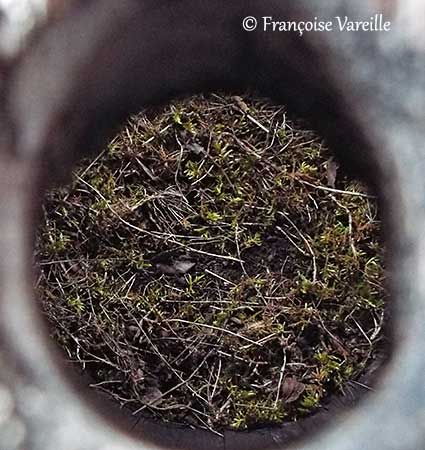
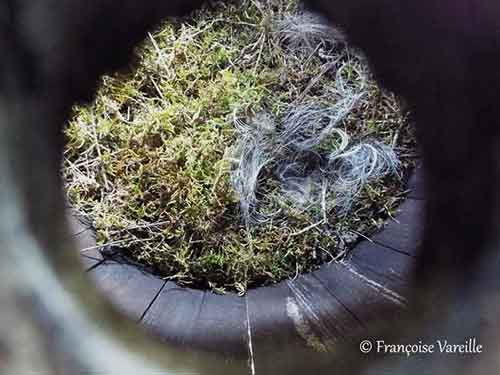
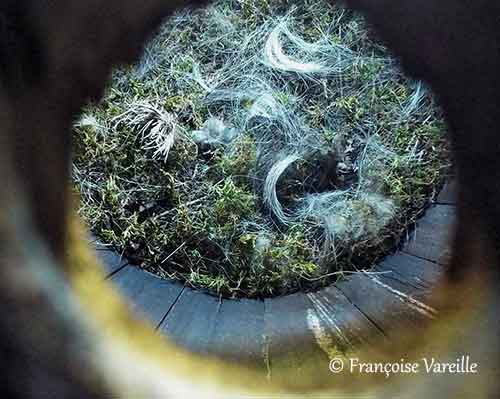
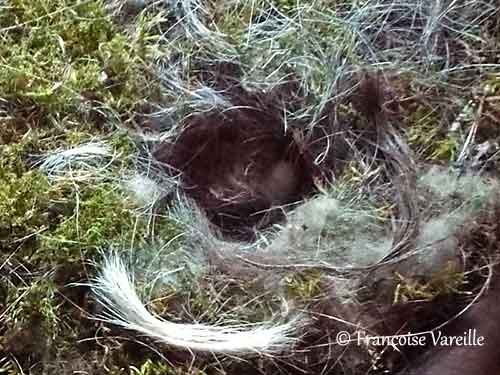
Small birds, probably passerines, have been observed near the task, but they were too far for good identification.
They disappeared rapidly, maybe chased away from the site by the Hoopoes.
And on April 10, the Hoopoe’s pair starts to clean the cask.
One of the birds removes and ejects the hair through the task entrance. We can see a mound of hair on the grass below the entrance.
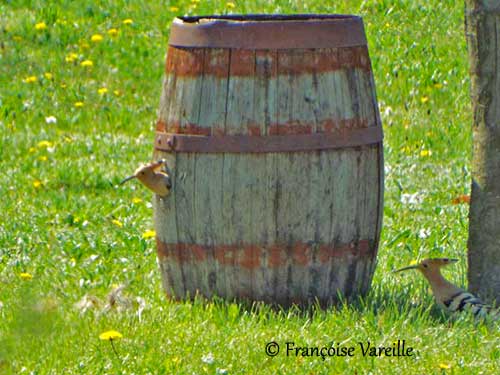
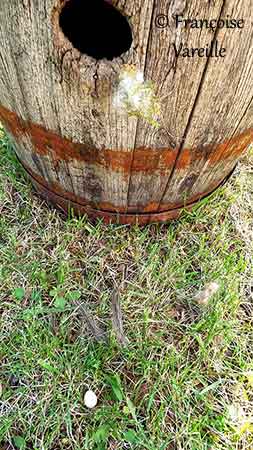
An egg is on the ground with two hair tufts, while other materials are hanging from the entrance hole. Cleaning is in progress!
The eggs are removed too and ejected from the nest. Only one is not broken and it will be carefully observed later. The other eggs are broken below the entrance.
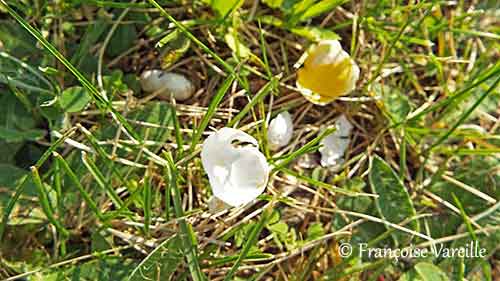
Three days later, the Hoopoes are still cleaning the nest, removing the dirty moss which falls on the grass. But surprise! The mound of hair has been removed from the ground by the Hoopoe!
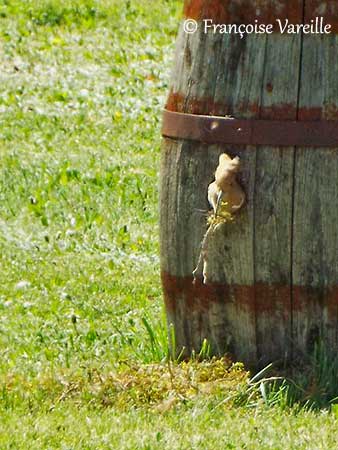
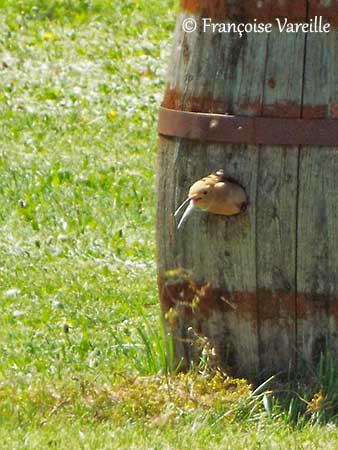
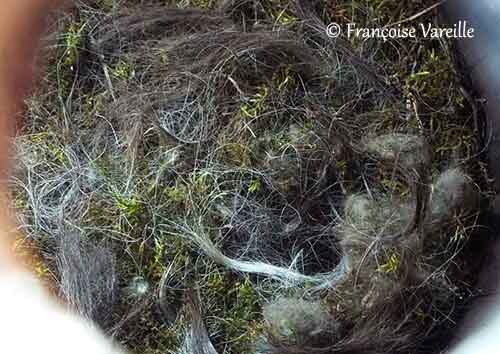
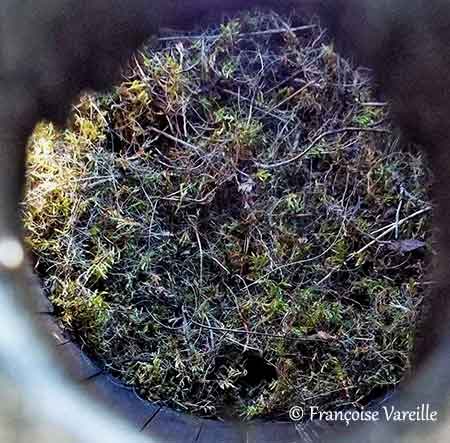
The cask is now ready to receive the Hoopoe’s clutch, probably in a few days.
On April 14, the male is feeding the female which is inside the cask. The laying should not be long…
Observation of both eggs and hair removed from the nest.
The eggs are white with scattered small orange-brown spots throughout the surface. Only one egg is not broken. It is 2 centimetres long and 1,3/1,5 centimetres wide.
The intruders have been described as brown passerines with some black stripes on the upperwings. They were fairly similar to House Sparrows, but the eggs are far too clear and do not correspond to this species.
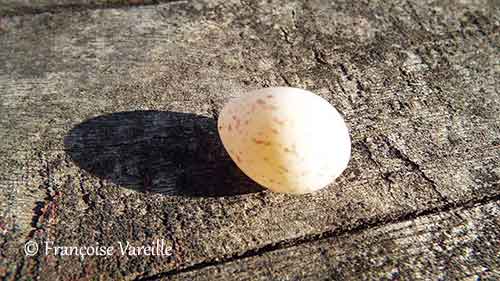
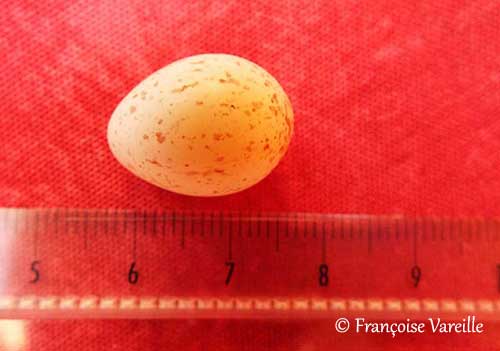
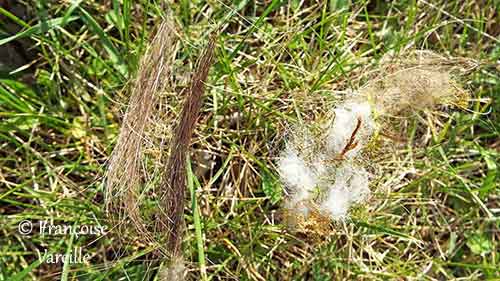
Following the observation of the Great Tit reproduction in 2019, we can see that the nest is fairly similar, and the eggs too. There were probably Great Tits.
See this page: Reproduction of the Great Tit in the garden
---------------------------------------------------------------------------------------
Now, the laying can start.
April 14, the male feeds the female outside the cask.
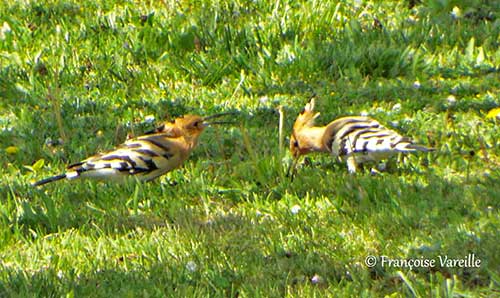
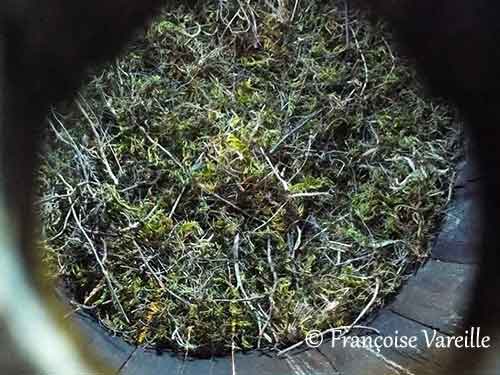
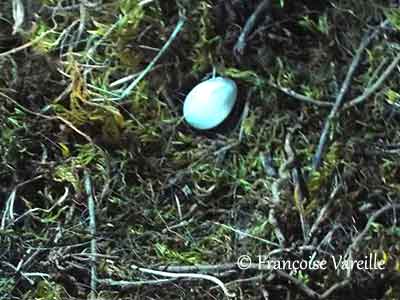
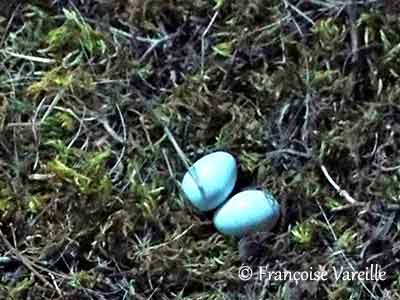
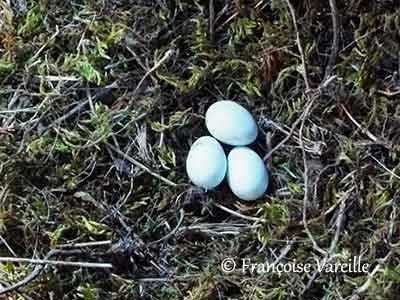
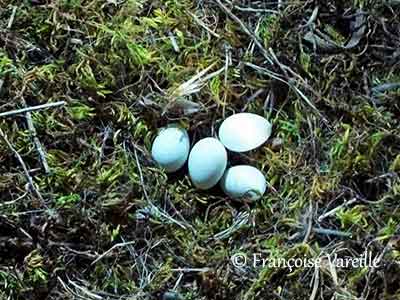
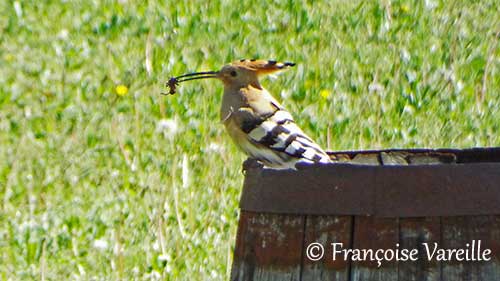
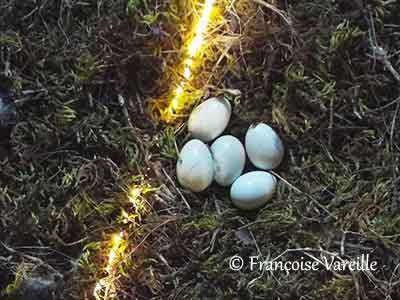
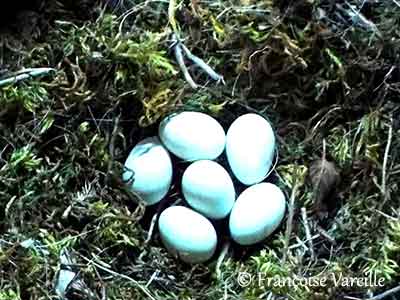
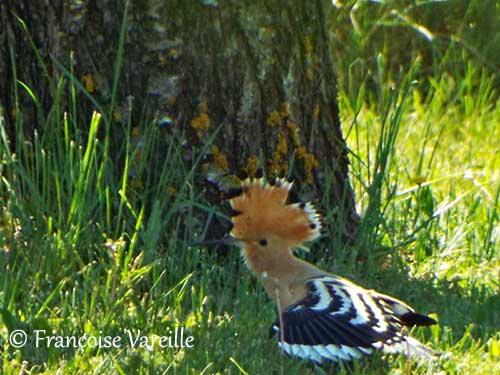
April 24, the 7th egg is laid. It is normally the last one, but do we ever know… and of course, on April 25th, here is the 8th egg!
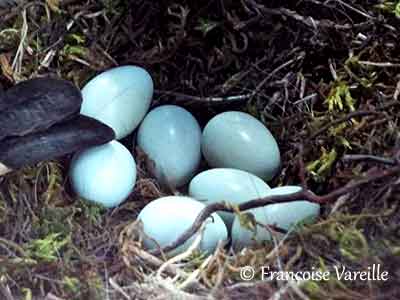
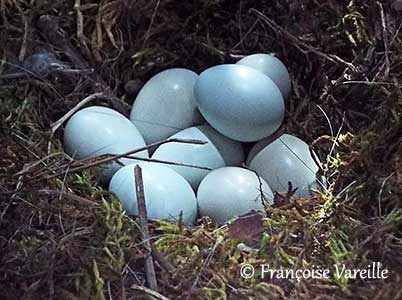
The female started the incubation after the laying of the third egg. She is now on the nest, always fed by her mate which remains in the vicinity of the cask.
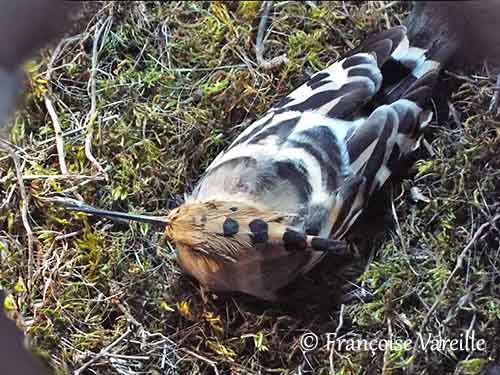
Waiting begins. See you soon for the hatching!
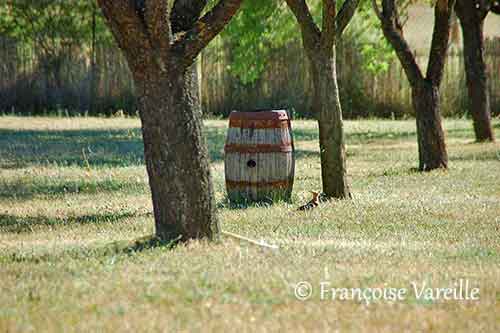
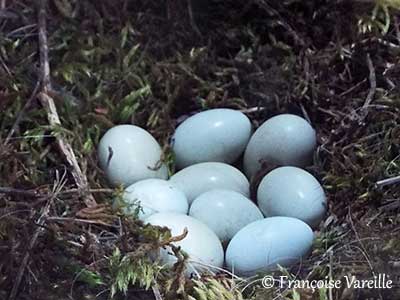
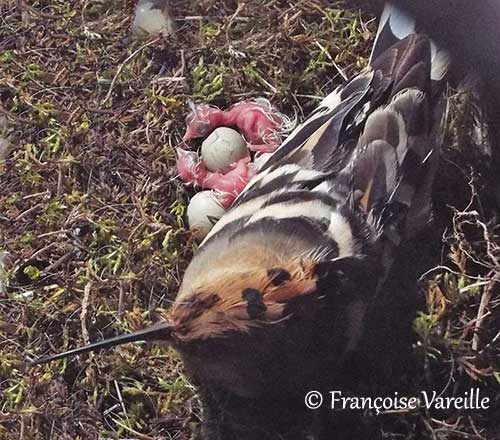
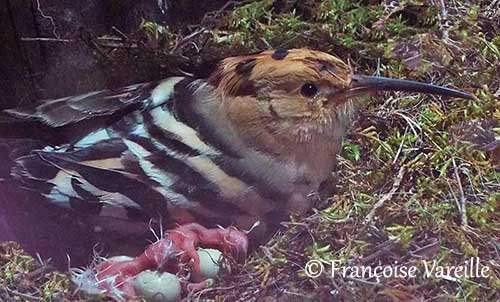
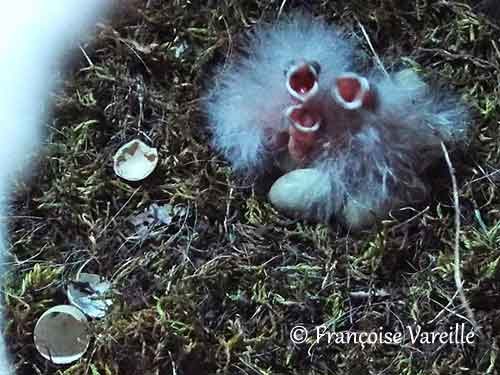
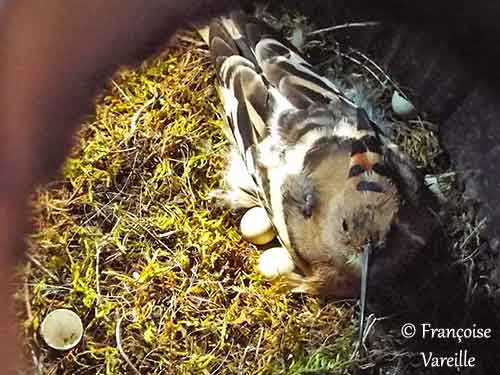
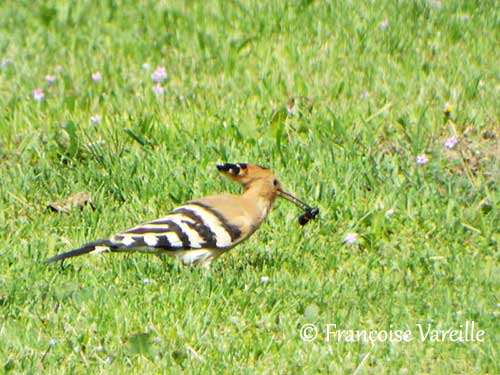
On the picture below, we can see the complete brood with seven (or eight) chicks on nine eggs laid. One of the chicks is dead but the corpse has been removed, like the remaining egg. This time, the nest has been cleaned by the female! The seven chicks need some space!
The two youngest chicks are placed among the oldest ones, the second and third from the left. They have shorter crest feathers. Maybe again a kind of protection from the oldest birds?
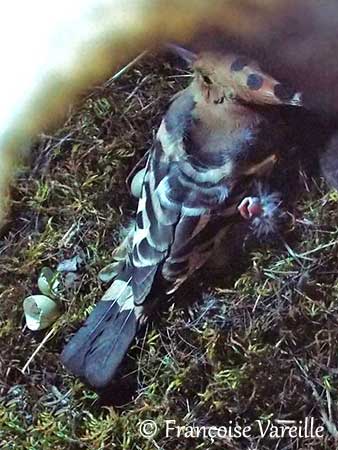
On May 8 in the evening, the photographer finds 5 downy chicks very close to each other.
On May 9, the female is with them. One chick is brooded, while the four others are begging for food.
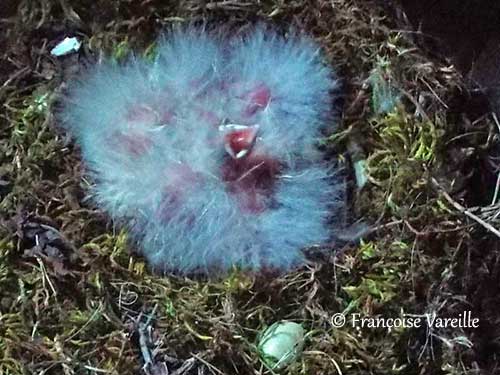
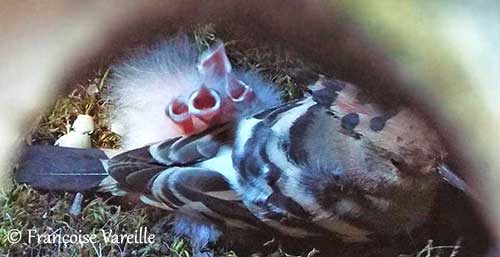
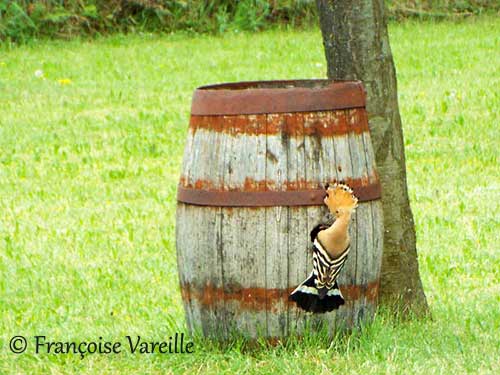
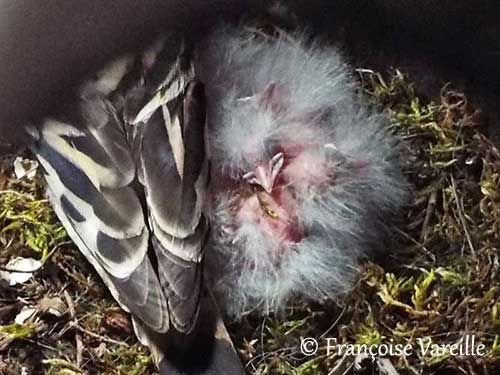
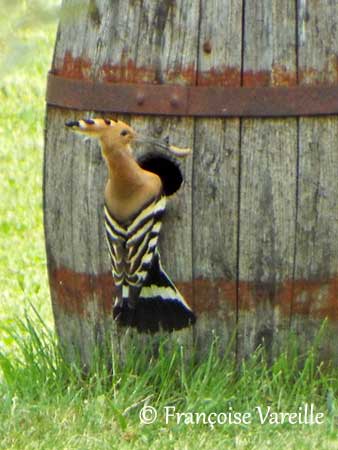
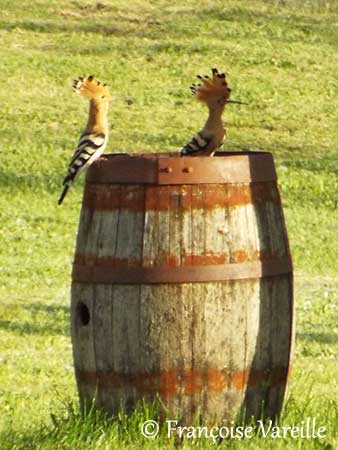
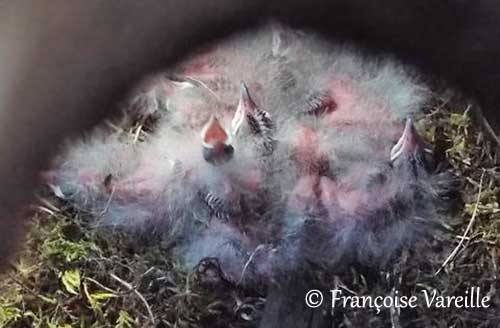
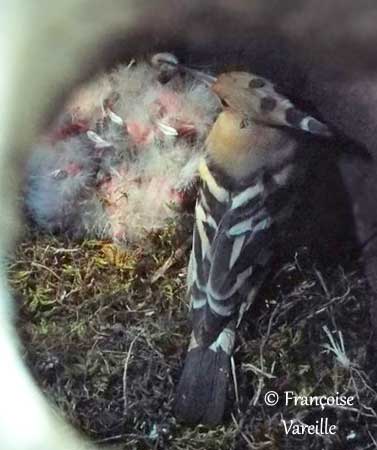
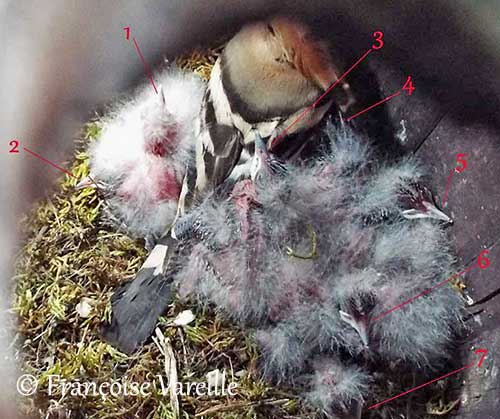
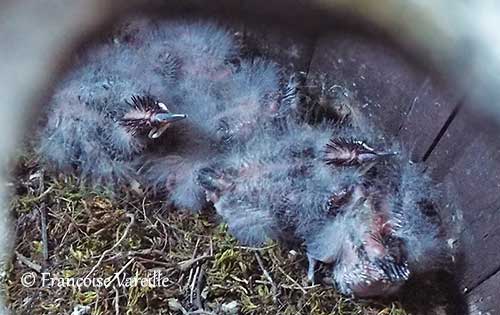
The chicks are very difficult to see individually, but from an image taken from a video, we can see below 8 bills begging for food! There will always be a doubt about the ninth egg...
A very bad smell is noticeable when approaching the cask due to both droppings and debris that accumulate on the lining. It is used to keep the predators away from the nest.
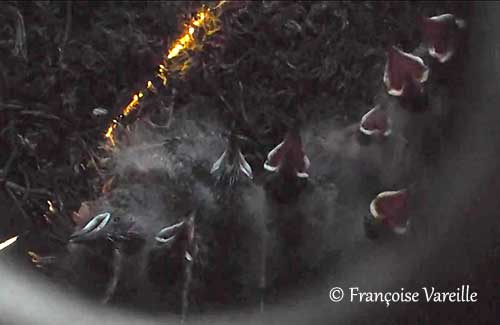
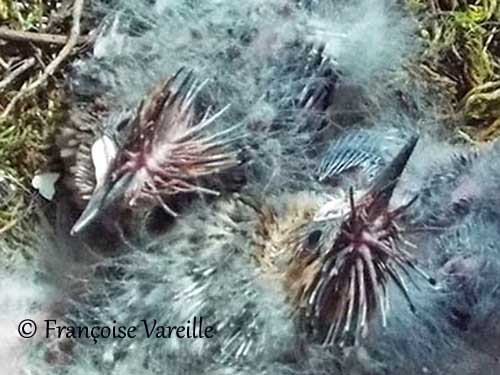
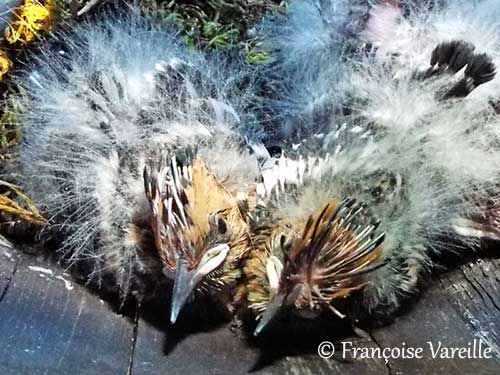
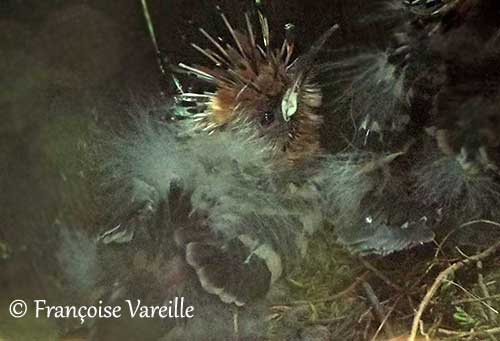
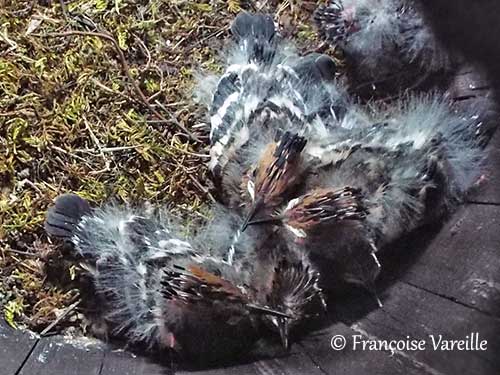
On the picture below, we can see the droppings all along the sides of the nest. The chicks usually defecate along the rear wall of the cavity, here the cask, involving quickly a foul-smelling nest-cavity! In the same way, a dead chick is not removed from the nest (Reproduction 2016: OBSERVATION REPORT ). The bad smell is used to keep the predators away from the nest.
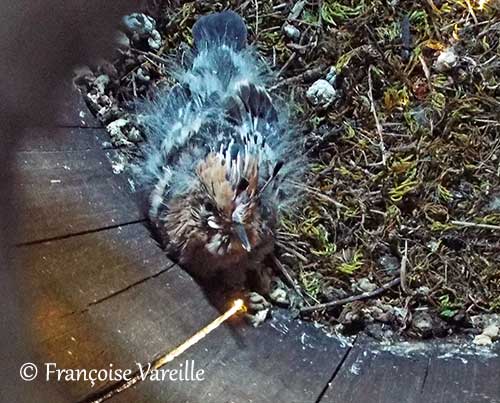
The female regularly removes the droppings by tossing them through the nest entrance. Later, the chicks themselves often defecate through the nest entrance, at least when it is larger.
Here is the result just below the nest entrance!
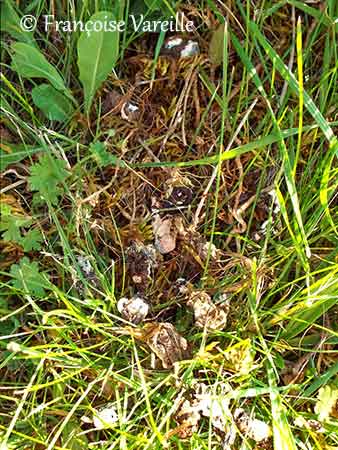
The picture below shows the latest chick on the left. Compared to the following chicks on the right, we can see that tail, wings and crest feathers are not completely grown because the shafts are still visible.
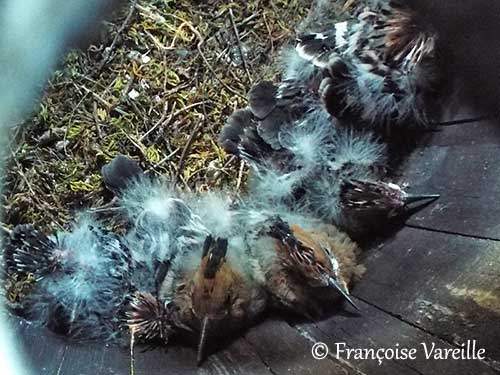
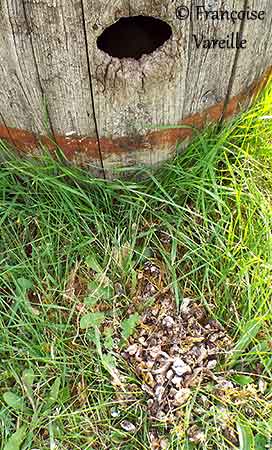
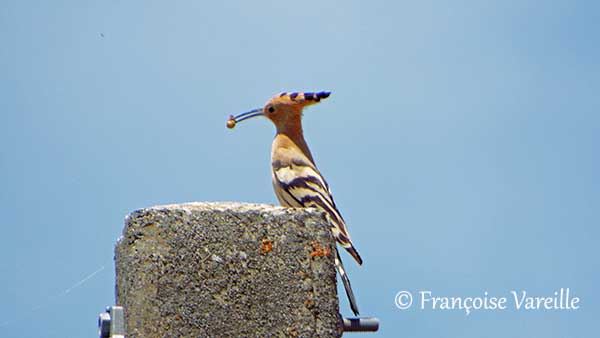
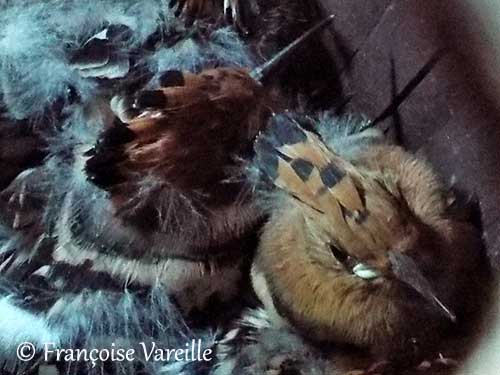
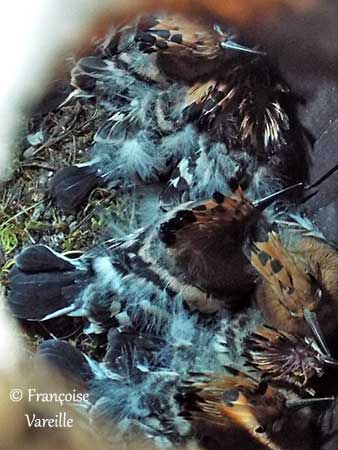
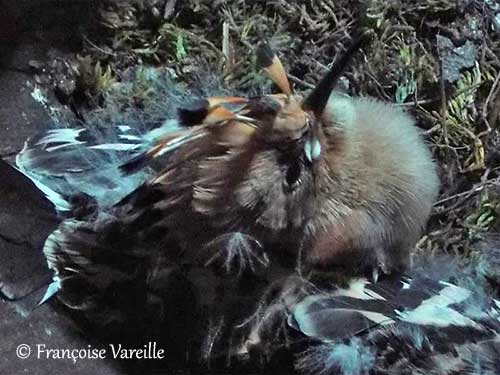
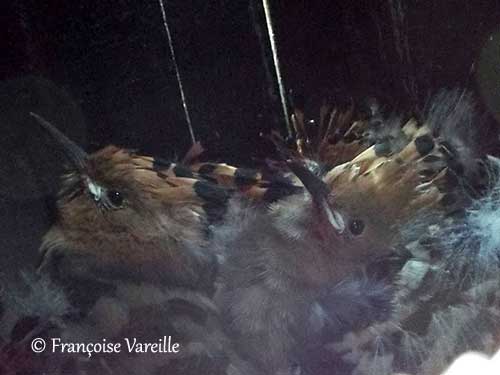
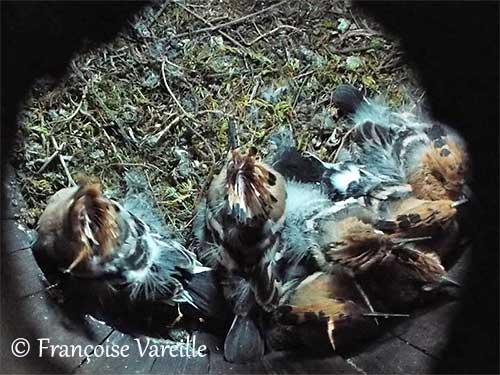
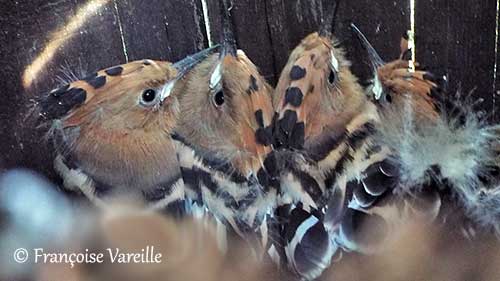
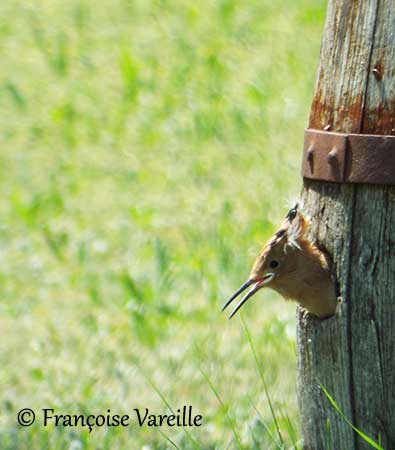
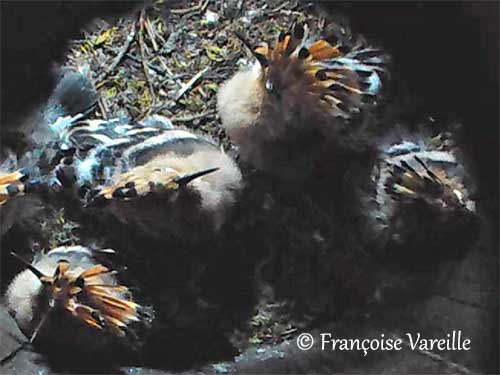
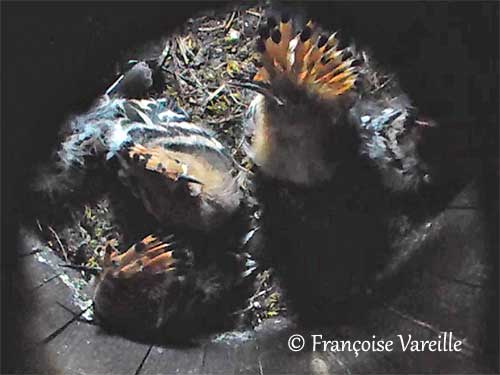
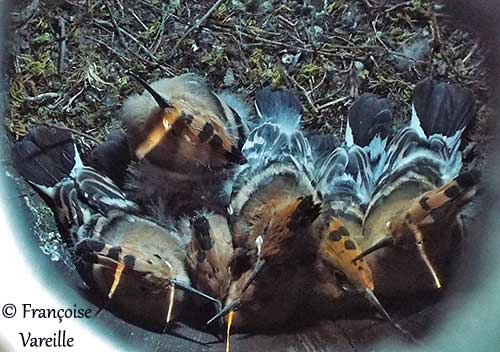
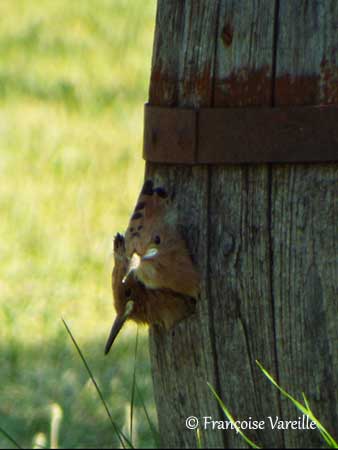
Youngest chicks
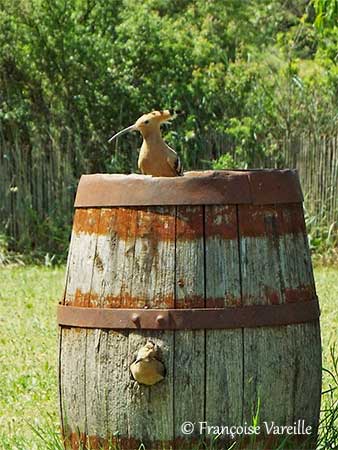
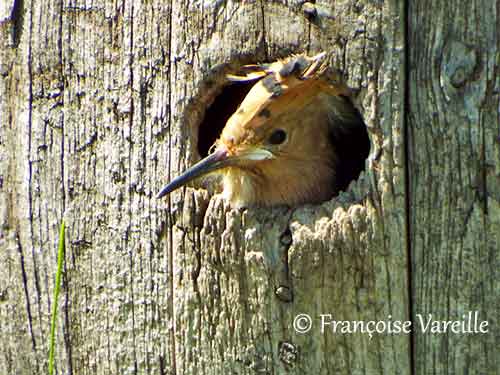
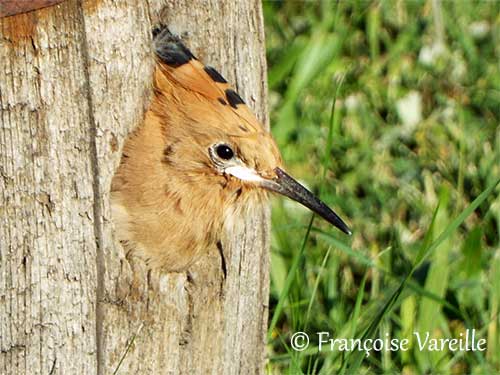
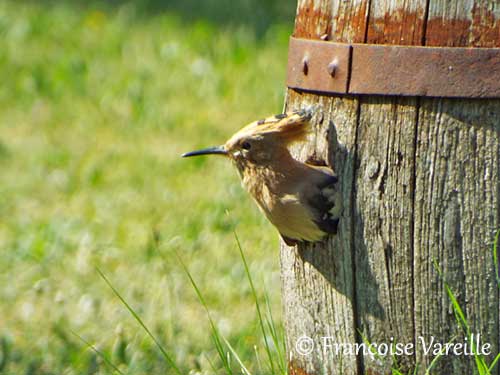
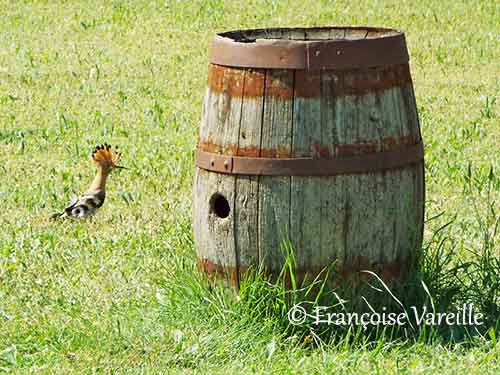
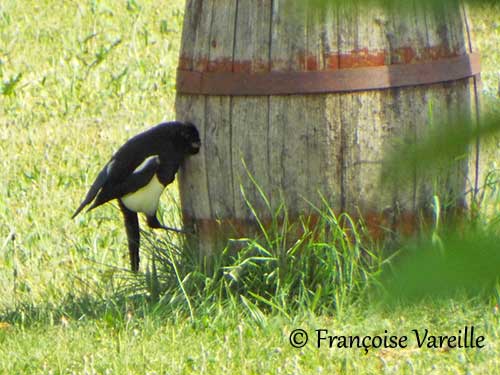
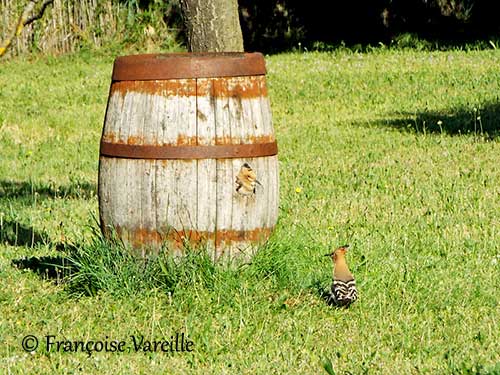
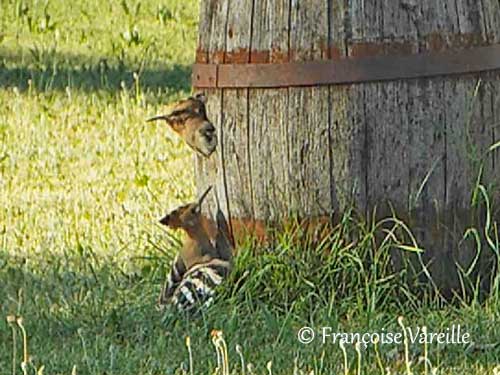
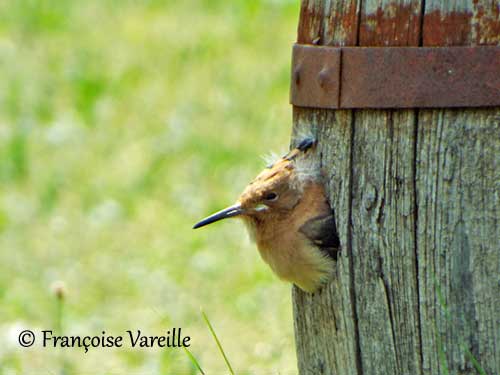
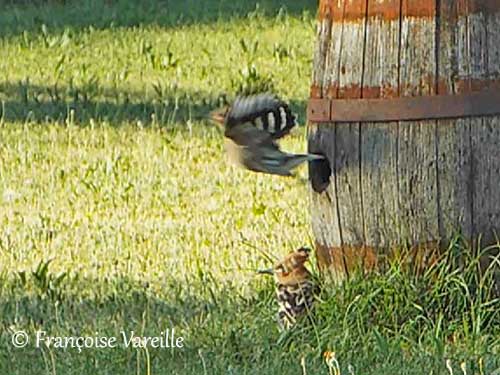
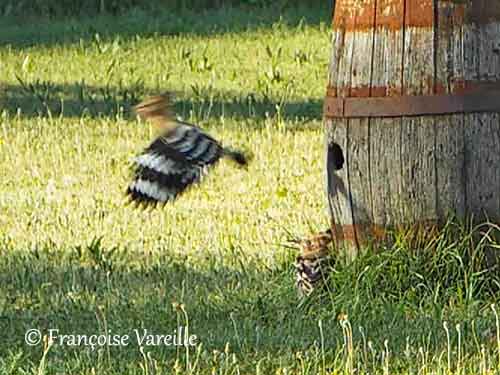
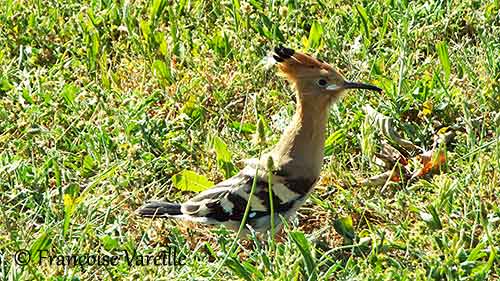
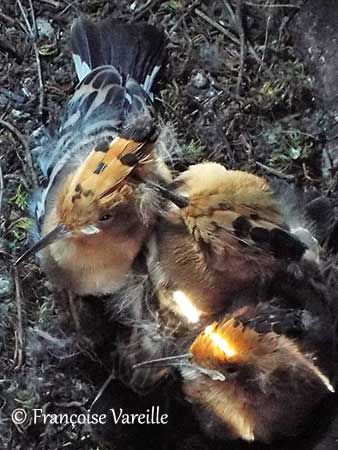
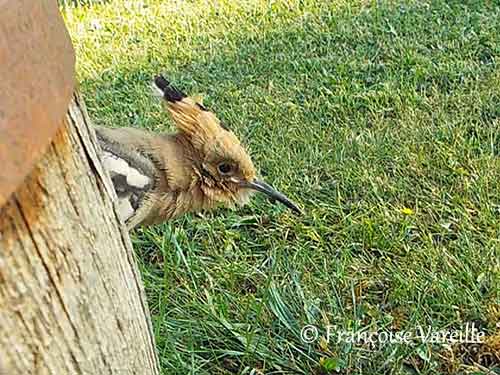
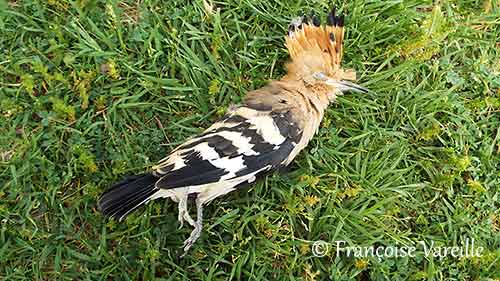
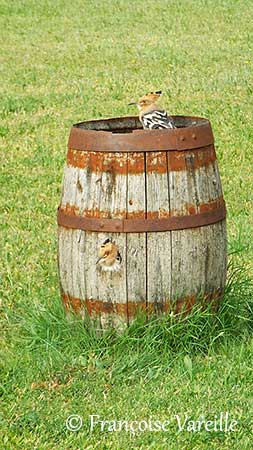
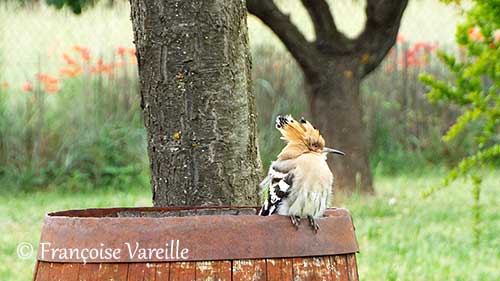
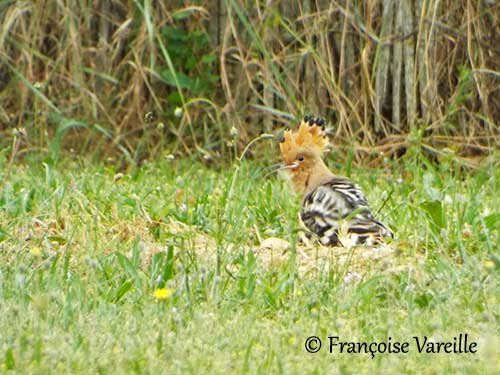
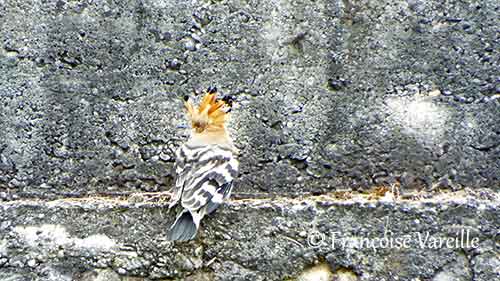
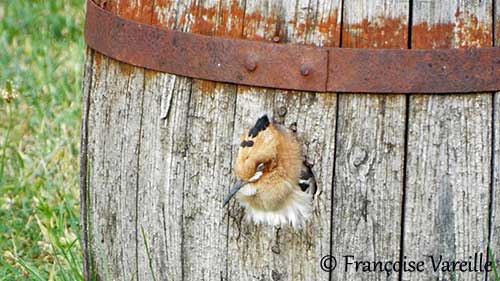
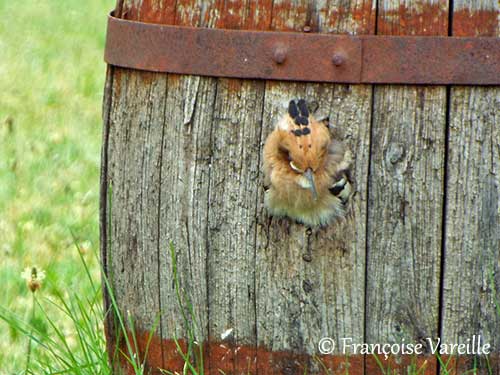
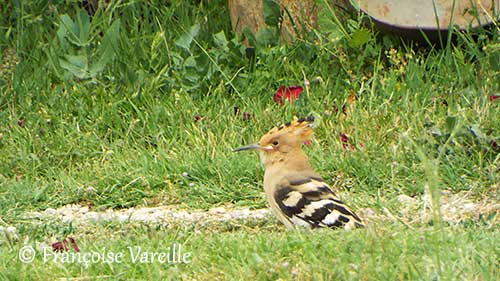
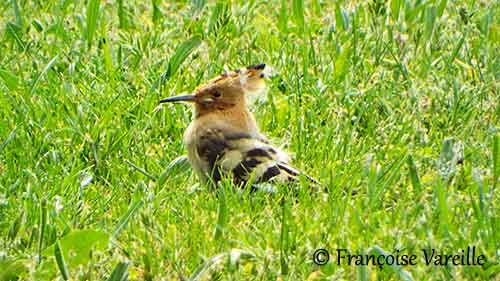
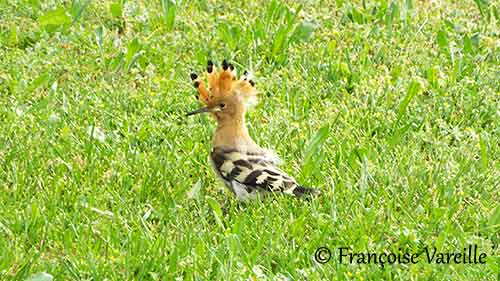
On June 1st at noon there was only one chick left in the nest. But tonight, another chick joined it in the cask. They will sleep at nest one night more.
We see very clearly that the chick on the left has the tail feathers much shorter than those of the other chick on the right. It will have to wait a little more time before flying.
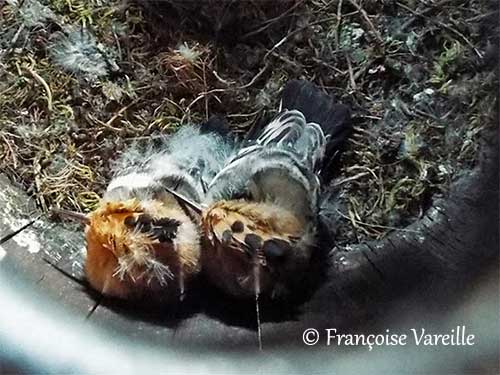
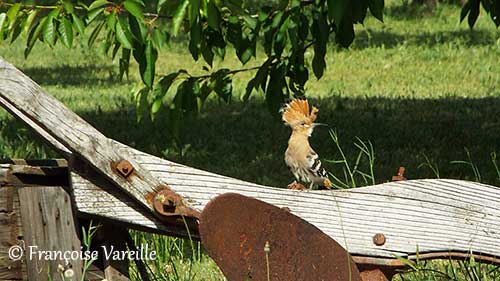
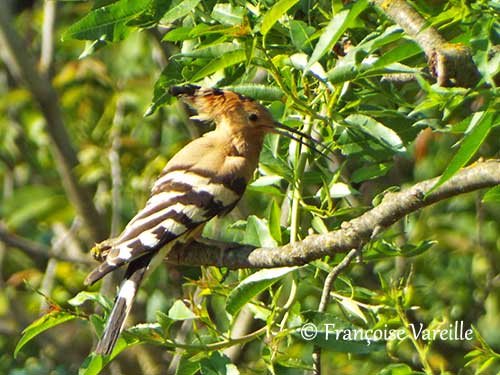
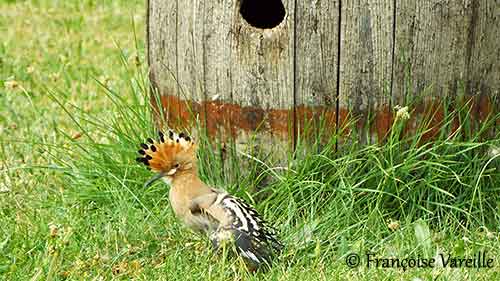
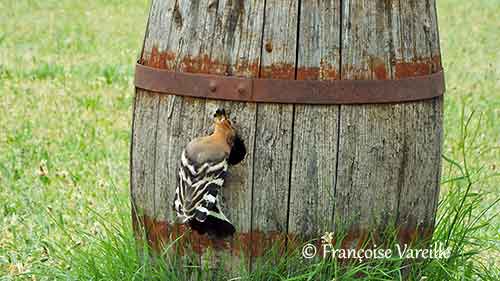
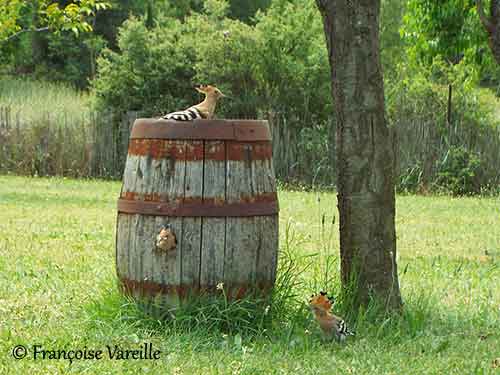
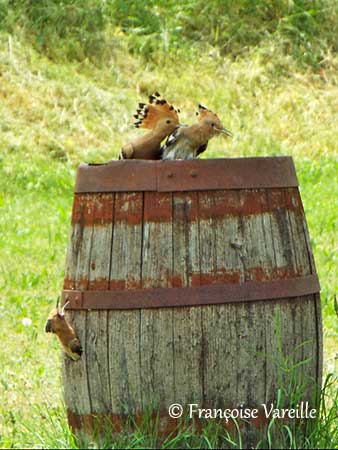
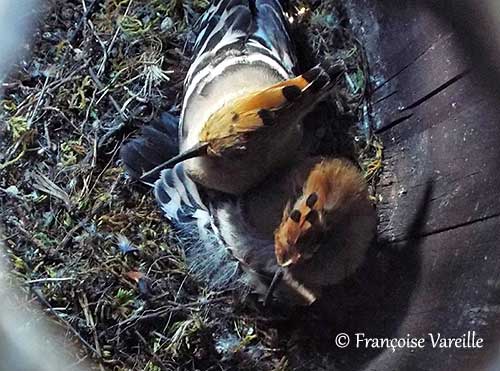
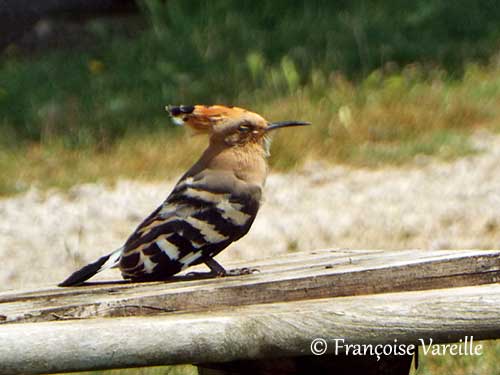
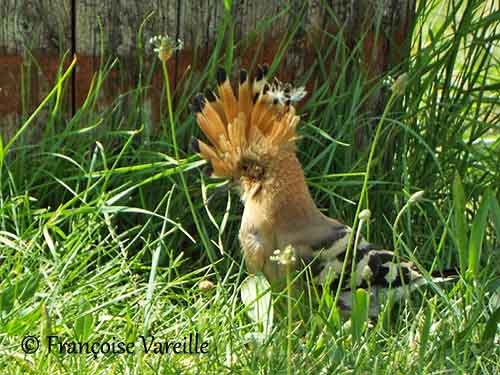
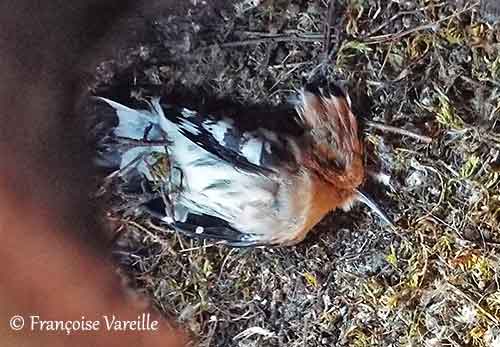
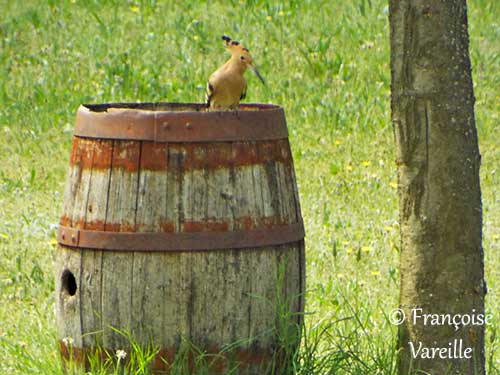
Summary reproduction April / May 2017
The pair arrived on March 19, 2017 for the 4th consecutive year.
Following some problems with intruders at the very beginning, copulation was observed on April 16, probably preceded by a few others.
The egg laying started on 18 April and ended with the 9th egg on 26 April.
The female is often fed by the male during the incubation which began on 20 April after the egg laying of the 3rd egg. But she leaves the nest from time to time for foraging.
The first births occurred on May 6th
On May 15th, 8 chicks were present in the nest. One of them disappeared very quickly. So there are 7 living chicks.
The first flight occurred May 28th
The cycle ended June 3rd in the morning.
There were a total of 9 eggs laid. One of them did not hatch and disappeared from the nest.
A chick disappeared very quickly and his corpse had to be removed from the nest because it was not visible at any time. But the bones found on June 7th are perhaps its remains.
One of the elders was found dead in the garden 24 hours after leaving the nest. No trace of wound, blood or fracture.
The last born was found dead in the nest on June 3rd in the morning. No trace either.
And on June 5, while the female is still on the top of the cask, another chick has been found dead at nest. This is probably the other "newborn" that showed some signs of weakness with especially half-closed eyes.
The brood produced 4 juveniles currently present in the garden. The parents will feed them for a few days, before beginning a second brood.
Wish them good luck!
Bad surprise on June 5th ... Another juvenile was found dead at the nest. Several problems may have caused his death, like ingestion of chemicals contained in the prey, malnutrition, bad weather ... He returned to die where he was born. Back to the starting point.
